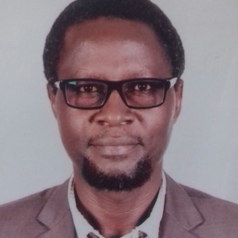Scholars have described the years during which Daniel arap Moi served as Kenyan president as the golden age of Kenya’s diplomatic practice. Moi was the longest serving president of Kenya – remaining in office from 1978 to 2002.
Prior to that he had served as vice-president from 1967 to 1978, succeeding President Jomo Kenyatta on his death.
Moi is credited with putting Kenya on the world map as a key player in conflict management, being itself an “oasis of peace” in a volatile region of the Greater Horn of Africa. Moi was a foreign policy president, having enjoyed the latitude of representing Kenyatta in high level diplomatic functions globally.
And as Kenyatta’s vice-president, he received a great deal of training in foreign policy. For example, he represented Kenya in multilateral engagements such as United Nations, Commonwealth and various bilateral diplomatic meetings.
Moi promised to continue with the late Kenyatta’s foreign policy and leadership approaches. But by 1985, he had started reaching out to non-traditional partners such as China.
He hinged the country’s foreign policy on mediation and peace-making and even served as the chair of the Organisation of African Unity for two terms. He used this position to champion the pan-African agenda of peace and security. For instance he condemned the invasion of Lesotho by the apartheid regime of South Africa. Kenya also led the peace efforts in Sudan and Somalia.
In late 2002, President Moi hosted a Somali national reconciliation conference in the Kenyan town of Eldoret. The conference took place under the auspices of the Intergovernmental Authority on Development.
As a pan-Africanist, Moi championed the establishment of the Intergovernmental Authority on Development in 1986. He was one of the founding leaders of the Intergovernmental Authority on Drought and Development, which later became the Intergovernmental Authority on Development.
In his pursuit of regional peace, Moi often reached out to other regional leaders and particularly pushed for peace processes in the greater Horn of Africa through the use of the authority.
He is credited with the push to integrate conflict resolution and peace building within the organisation, in addition to issues related to drought and desertification in the Horn of Africa. The Inter-governmental Authority on Development continues to play a key role in securing peace and stability on the continent.
Kenya’s diplomacy was at its peak by 1989 when Kenyan troops joined the UN Transition Assistance Group in Namibia.
Critics argue that Moi used foreign policy to deflect attention from the internal governance and political challenges facing Kenya.
Pressure for change had been mounting since the end of the unipolar world order that emerged under the US when the Cold War ended. Moi’s government was facing growing calls for political reforms such as multiparty democracy.
Ultimately, both external pressure from the liberal states such as the US and Britain, and internal agitation for political reforms, affected Moi’s steadfast focus on diplomacy, peace, and conflict management.
Nevertheless, he’s credited with some celebrated peacemaking achievements. Possibly the biggest was his initiation and steering of the Sudan peace process that led to the independence of South Sudan from Sudan.
Even though the world’s newest country slid into crisis in December 2013 following differences between President Salva Kiir and his vice-president Riek Machar, the fact that it became an independent state in 2011 was important because the South Sudanese people desired to overcome marginalisation and resource conflicts, and to enjoy the fruits of self-determination.
South Sudan
South Sudan gained independence from Sudan in 2011 following a series of negotiations and peace processes that culminated in the Comprehensive Peace Agreement in 2015. The agreement ended 22 years of civil war – one of Africa’s longest-running internal conflicts.
The path to peace was long and hard. In early 2002, the Intergovernmental Authority on Development mandated Moi to lead efforts to merge the parallel peace initiatives on Sudan. One was under the Authority and the other was a Libyan-Egyptian initiative.
On his appointment to chair the merger between the two peace initiatives, Moi dispatched Kenya’s special envoy for the Sudanese peace process, Lt-Gen Lazarus Sumbeiywo, to Egypt for talks. The goal was to create a singular peace process. Efforts to merge the two processes were initiated by the US ambassador, John Danforth. The ambassador had written to both Moi and President Hosni Mubarak of Egypt requesting them to work together.
Moi also played a great role in lobbying for international support for the Sudanese peace process. Towards this end he engaged envoys from Britain, US and Norway.
Even in his retirement, Moi followed the Sudan peace process closely.
The legacy
Moi laid the foundation that opened doors for peace in South Sudan. Gratitude for his role remains strong. He attended the country’s 2011 independence inauguration and was loudly cheered when his name was mentioned among those who helped the country attain independence.
And at Moi’s funeral, President Kiir affirmed Moi’s peace efforts. Kiir stated that the independence of South Sudan would remain Moi’s legacy. Indeed, while eulogising Moi in Nairobi, Kiir summarised Moi’s role in South Sudan’s peace process, and the general perception of Moi by the people of South Sudan, saying
We consider Moi the hero of our independence and freedom



 Robinhood Expands Sports Event Contracts With Player Performance Wagers
Robinhood Expands Sports Event Contracts With Player Performance Wagers  Asian Fund Managers Turn More Optimistic on Growth but Curb Equity Return Expectations: BofA Survey
Asian Fund Managers Turn More Optimistic on Growth but Curb Equity Return Expectations: BofA Survey  Fed Near Neutral Signals Caution Ahead, Shifting Focus to Fixed Income in 2026
Fed Near Neutral Signals Caution Ahead, Shifting Focus to Fixed Income in 2026 





























